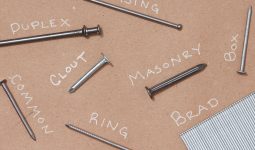Here are the different types of rolled roofing. Rolled roofing has become very popular recently because of its price, ease of installation, and aesthetic designs.
Are you not satisfied with the difficulty and cost of re-roofing your home? Traditional roofing materials are expensive and require professional installation.
Even if you are a DIYer building your home from your two-story tiny house plans, you will find this roofing easy to work with.
Moreover, rolling roofing is a low-cost, low-maintenance alternative to traditional roof tiles.
Many manufacturers employ the same asphalt shingle ingredients, including felt, tar, and asphalt, to construct rolled roofing.
Furthermore, roll roofing provides more options at a lower cost than standard roofing. The installation technique is so straightforward that even someone without professional experience may install roll roofing.
Also, rolled roofing may be the best option if you have a flat roof and severely need a new roof. There are many different sorts and designs to pick from.
However, the term “rolled roofing” is inherently imprecise. It is interesting to know that there isn’t just one type of rolled roofing material or design; there are dozens.
In this article, we’ll discuss many types of rolled roofing so you can choose the ideal one for you.
1. Ordinary Rubber Rolled Roofing
As one of the different types of rolled roofing, Rubber roofing is the most prevalent and frequently used among all rolled roofing materials.
Rubber roofing is also the most cost-effective roofing material. However, recycled tires, sawdust, and slate dust are the most frequent materials used to produce rubber-rolled roofing.
Rubber roofing can be installed on any flat roof as overlapping sheets. Furthermore, it is also available in shingles that look similar to slate tiles.
Rubber-rolled roofing has several advantages, including cost, durability, and ease of maintenance.
2. Epdm Rolled Roofing
EPDM roofing, often known as rubber membrane roofing, is also different. Rubber roofing is made from recycled rubber.
On the other hand, EPDM rubber roofing has the advantage of being incredibly lightweight and extremely durable.
Furthermore, EPDM rolled ruffing is affordable, long-lasting, and straightforward, like regular rubber roofing. EPDM flooring, however, does not require any additional reinforcement because it is lightweight.
Also, every EPDM floor has adhesive seams, so you won’t worry about leaks. EPDM rolled roofing is one of the different types of rolled roofing. It is long-lasting and can last up to 20 years.
3. TPO Rolled Roofing
TPO roofing has become more popular than any other rolled roofing due to its low cost and durability.
This type of rolled roofing comprises a mixture of ethylene propylene and polypropylene. However, manufacturing procedures and quality differ significantly.
Furthermore, the most significant advantage of TPO roofing is its low cost. It is less expensive than EPDM roofing.
The white tint of TPO roofing improves heat resistance and prevents heat buildup in the structure. TPO also resists corrosion and inhibits the growth of algae and mildew.
4. Bitumen Rolled Roofing
As the name implies, Bitumen rolled roofing is a type of asphalt roofing designed and supplied as rolls for the first time. It can be self-adhesive or cold-press adhesive.
Bitumen rolled roofing seams are welded together. The longest advantage of bitumen roofing is its durability.
However, modified bitumen roofing has a longer life expectancy than most other types of rolled roofing. If properly maintained, it can survive for more than 20 years.
5. Asphalt Rolled Roofing
The surface of this roofing is oil-based and mineral. It’s made of thick organic felt or fiberglass mat.
The roll is wet with asphalt before being covered with mineral granules, which provide features such as light reflection and impact resistance.
This roll roofing material is less expensive than rubber but less durable. On the other hand, it may be installed quickly, saving you a lot of money on labor.
6. Smooth Finished Rolled Roofing
Smooth-finished rolled roofing typically comprises saturated organic felt commonly coated with mica or talc to smooth it out.
These roofing materials are usually employed for temporary purposes, such as protecting a structure from moisture intrusion during a remodeling or repair project, and have lower durability than other roofing materials. This is one of the different types of rolled roofing.
7. Mineral Finished Rolled Roofing
Roofs with a rolled surface are more durable than those with a smooth finish. Also, the mineral finish is primarily made of fiberglass or organic roofing felt. The material is then wet with hot asphalt before being coated with rock or mineral granules.
8. Saturated Felt Rolled Roofing
Another type of rolled roofing is saturated felt, utilized as an underlying product to support other materials rather than a finishing material.
Roof felt creates saturated rolled roofing, which is subsequently saturated with asphalt. This roofing material can also be used as a base layer for other rolled roofing types.
9. Eaves Flashing Rolled Roofing
Self-adhesive eaves flashing rolled roofing is commonly used as a superior moisture-protecting flooring material. Eaves flashing rolled roofing is typically manufactured with artificial polymers and asphalt additives.
Eaves flashing keeps water out of roof penetration, around eaves, and other areas where ice dams or pooling occur. This is one of the different types of rolled roofing available.








